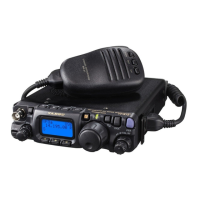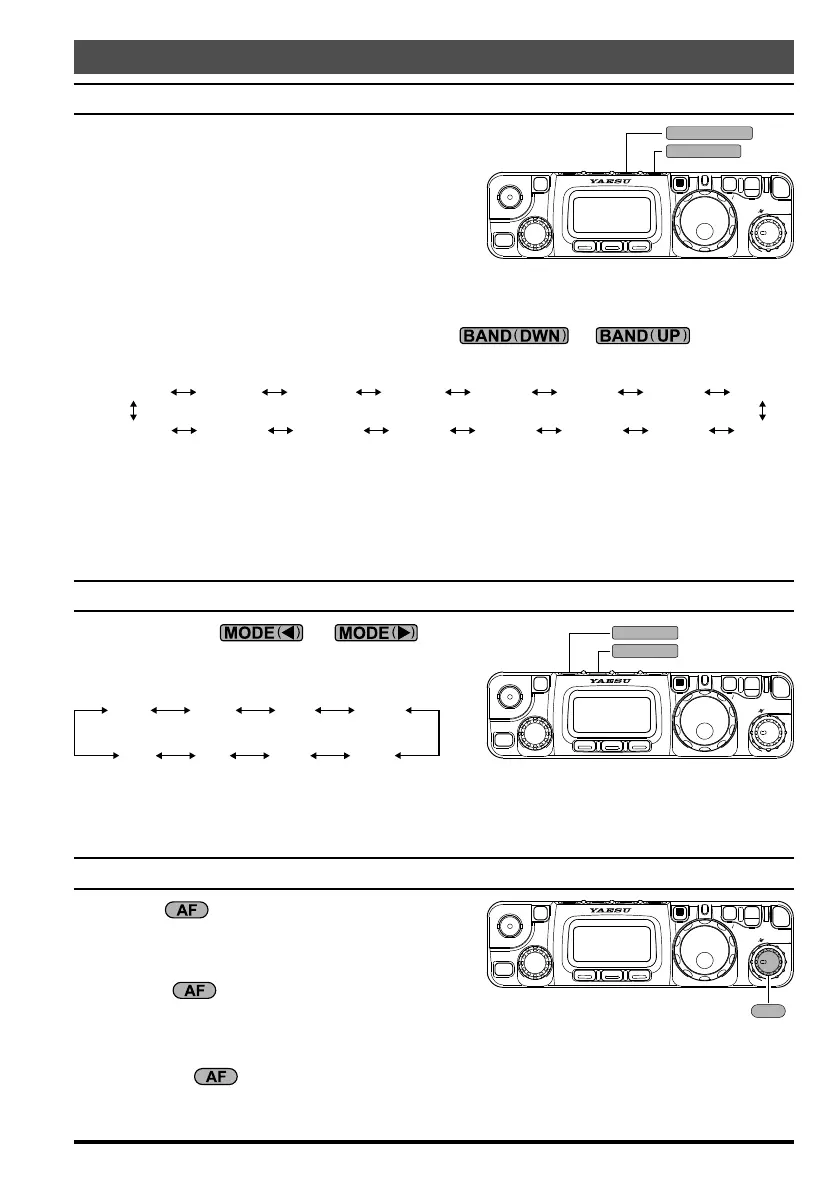17
Operation
Operating Band Selection
This transceiver covers an incredibly wide fre-
quency range, over which a number of different
operating modes are used. Therefore, this trans-
ceiver’s frequency coverage has been divided into
different operating bands, each of with has its own
preset channel steps and operating modes. You
can change the channel steps and operating mode once you get started, of course, per
the next section.
To change the frequency band, press either the
or
key to move
to the next lower or higher operating band, respectively.
1.8 MHz 3.5 MHz 5.0 MHz 7.0 MHz 10 MHz 14 MHz 15 MHz 18 MHz
21 MHz24 MHz28 MHz50 MHz88 MHz108 MHz144 MHz430 MHz
1) Recalling the 5 MHz band (U.S. model) requires different procedure. See page
20 for details.
2) VFOa and VFOb are independent VFOs, so they may be set to different bands.
See the “Stacked VFO System” discussion on page 19 for details.
Mode Selection
Press either the or key to
move among the eight settings for the operating
modes, respectively.
LSB USB CW CWR
AM FM DIG PKT
You can also set VFOa and VFOb to different modes in the same band, allowing you
to have a “Phone” VFO and a “CW” VFO, for example.
Adjusting the Audio Volume Level
Rotate the knob to set a comfortable listen-
ing level.
When operating in the “DIG” or “PKT” modes, you
may set the
knob to any comfortable setting,
or even all the way off, because the output from
the DATA jack is a xed-level audio signal.
Start with the
knob set fully counter-clockwise, especially when using FM (the
background noise on FM can be surprisingly loud)!
CLAR
E
L
S
A B
C
F
V
LOCK
PWR
SQL/RF
A
F
HOME
M
BAND
UP
( )
CLAR
E
L
S
A B
C
F
V
LOCK
PWR
SQL/RF
A
F
HOME
M
MODE
( )
CLAR
E
L
S
A B
C
F
V
LOCK
PWR
SQL/RF
A
F
HOME
M

